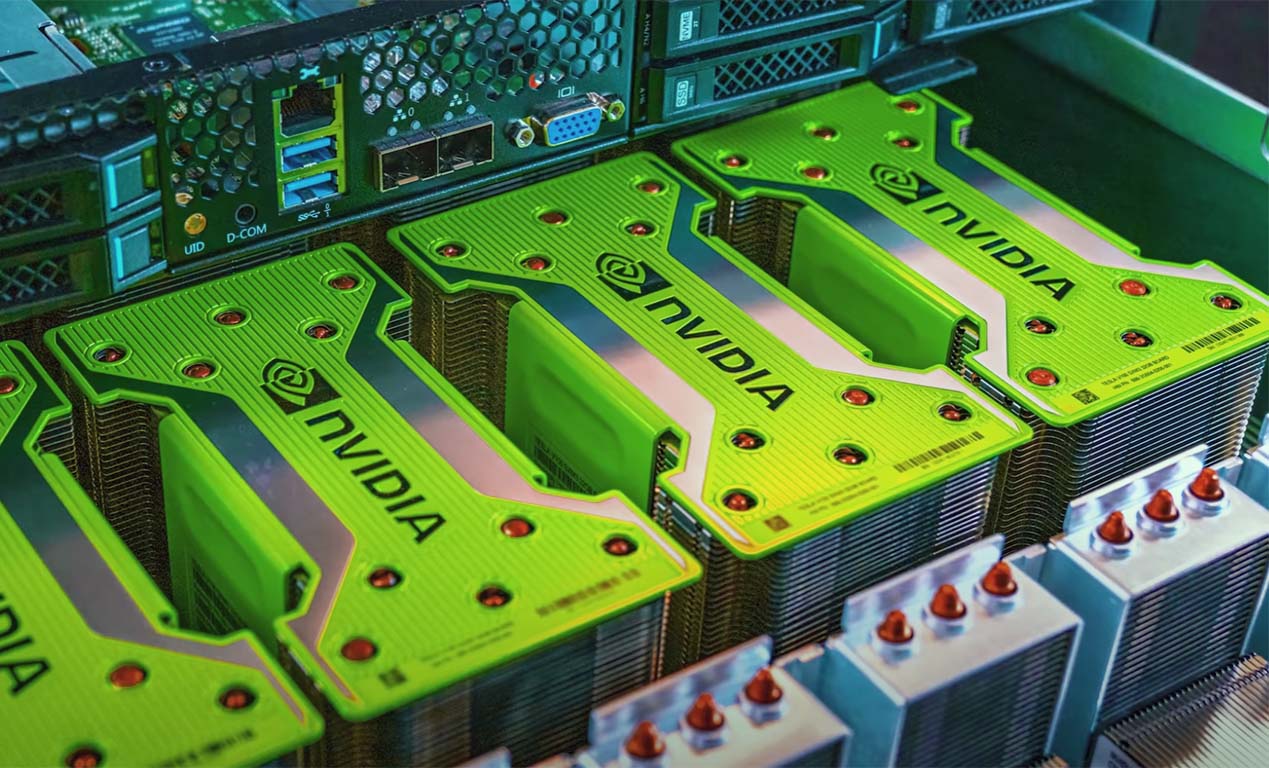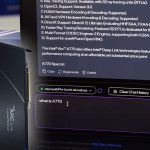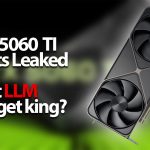Local LLM on a Budget? CUDA Deprecation Spells Trouble for DIY AI Rigs Using P40, V100, 1080 Ti

Nvidia has officially signaled a significant transition in its CUDA ecosystem, announcing in the CUDA 12.9 Toolkit release notes that the next major toolkit version will cease support for Maxwell, Pascal, and Volta GPU architectures. While these venerable architectures will likely continue to receive GeForce display driver updates for some time, their utility for CUDA-accelerated compute, the lifeblood of local large language model (LLM) inference, is now on a clocked timeline. This development sends ripples through the community of hardware enthusiasts meticulously crafting systems for on-premise AI, particularly those leveraging the VRAM-to-dollar ratio of older professional cards.
For the local LLM builder, this news isn’t about gaming frame rates; it’s about the future viability of hardware investments for running increasingly complex quantized models. The deprecation specifically targets offline compilation and library support. In practical terms, future iterations of the Nvidia CUDA Compiler (nvcc) will no longer generate machine code (SASS) for these older architectures. Furthermore, crucial CUDA-accelerated libraries such as cuBLAS, cuDNN, and others, which are fundamental for LLM inference frameworks, will not support Maxwell, Pascal, or Volta in their future releases post the current CUDA 12.x series. Nvidia states these architectures are “feature-complete with no further enhancements planned,” urging a migration to newer silicon.
The critical question for many is: when will this actually impact local LLM users? Nvidia has not provided a concrete date for the “next major CUDA Toolkit version release,” which is anticipated to be CUDA 13.x. The current CUDA 12.x series will continue to support building applications for these architectures. Inference software like llama.cpp often provides builds against older CUDA toolkits (even v11, last updated in 2022, is still commonly used), meaning existing setups won’t break overnight. However, as new LLM models and inference optimizations emerge that leverage features in newer toolkits, users of these older cards might find themselves unable to benefit or, in some cases, unable to run the latest software without significant effort in maintaining legacy environments. This transition period could last several months, or even a year or more, depending on Nvidia’s release cadence and the adoption rate of the new toolkit by LLM developers. For now, CUDA Toolkit 12.9 remains the last explicitly confirmed version to build for these GPUs.
The architectures facing this CUDA end-of-life span a significant period of Nvidia’s GPU development, from early 2014 to 2017, and include many cards that have become staples in budget-conscious LLM rigs.
| Architecture | Consumer GPUs | Professional GPUs | VRAM Range |
|---|---|---|---|
| Maxwell | GeForce GTX 750 Ti, GTX 970, GTX 980 Ti, Titan X (Maxwell) | Tesla M4, M40, M60 | 4GB – 24GB (M40) |
| Pascal | GeForce GTX 1060, GTX 1070, GTX 1080, GTX 1080 Ti, Titan X (Pascal), Titan Xp | Tesla P4, P40, P100, Quadro P-series | 6GB – 24GB (P40) |
| Volta | Titan V | Tesla V100, Quadro GV100 | 12GB – 32GB (V100) |
For local LLM enthusiasts, Pascal cards like the Tesla P40, with its generous 24GB of GDDR5 VRAM, have been a cornerstone for running larger models (e.g., 30B-70B q4 models) without breaking the bank, often found for remarkably low prices on the second-hand market. Similarly, Tesla P4 (8GB GDDR5) cards offer excellent power efficiency for smaller models or distributed inference. Volta, with the Titan V and Tesla V100, introduced Tensor Cores and offered substantial HBM2 memory (16GB or 32GB), making them potent, if pricier, options for serious local inference. Even some Maxwell cards, like the Tesla M40 (12GB/24GB GDDR5), have found their way into budget multi-GPU setups.
The impact on the second-hand market is likely to be twofold. Initially, we might see a surge of these cards hitting eBay and other marketplaces as developers and institutions look to upgrade, potentially driving prices down further. This could present a “last-call” buying opportunity for enthusiasts willing to navigate the complexities of older software stacks. Some believe these cards, especially P40s and V100s, still have 3-4 years of useful life if one is content with older, stable software environments. The argument stands: if you can acquire a Tesla P40 for a fraction of the cost of a modern card and it runs the models you need, it’s still a win. However, the long-term value proposition diminishes as the software ecosystem moves on. A card is only as good as the software that can leverage it, and if newer versions of popular inference engines or foundational libraries like PyTorch (which currently still compiles for CUDA 11.8) eventually require features exclusive to CUDA 13+ and beyond, these older GPUs will become increasingly isolated.
Looking ahead, Turing (RTX 20-series, Quadro RTX, and Tesla T models) is logically next in line for deprecation. However, Turing introduced more modern features, including widespread Tensor Core adoption and ray tracing hardware, and some Turing SKUs (like the GTX 1630) were released as recently as 2022. It’s reasonable to assume Turing has a few more years of CUDA support, likely through the entirety of the CUDA 13.x lifecycle and perhaps beyond. Volta’s relatively anemic consumer sales and its architectural similarities in some respects to Pascal might have made it an easier candidate to bundle with the older architectures for this deprecation cycle. Ampere (RTX 30-series, A-series) is almost certainly safe for a long while, given the massive install base of A100s in data centers, which Nvidia would be hesitant to alienate.
For the local LLM user, the upgrade path and immediate actions depend on their current setup and risk tolerance.
If you’re currently running Maxwell, Pascal, or Volta cards, there’s no immediate need for panic. Your existing hardware and software will continue to function with CUDA 12.x and older toolkits. Popular projects like llama.cpp will likely continue to offer builds compatible with older CUDA versions for some time. However, if you’re considering purchasing these older cards now, the significantly reduced prices must be weighed against the shrinking runway for cutting-edge software support.
For those looking to upgrade or build new systems with longer-term viability:
- Used Ampere: Cards like the RTX 3090 (24GB GDDR6X) remain a sweet spot for VRAM capacity and performance, offering a significant step up from Pascal and Volta.
- Ada Lovelace: The RTX 4090 (24GB GDDR6X) provides top-tier performance, and the RTX 4060 Ti 16GB offers a more budget-friendly entry into a modern architecture with substantial VRAM.
- Multi-GPU Strategy: Consolidating multiple older cards (e.g., three P40s) into one or two newer, more powerful cards (e.g., two 3090s or a single 4090 with a 3090) might be a sensible move to simplify software management and improve performance per watt, assuming VRAM targets can still be met.
While CPU inference continues to improve, particularly for specific model architectures like Mixture of Experts (MoE), and can offer impressive token rates on high-end CPUs for certain optimized models (e.g., Qwen 30B at 8-11 tokens/s), dense models still heavily favor GPU acceleration. An older multi-GPU system can still outperform even high-end EPYC systems on dense model inference.
Nvidia’s decision, while understandable from a business and engineering perspective focused on pushing new technologies, underscores the evolving challenges for the budget-conscious local LLM enthusiast. The primal desire to assemble “janky but functional” systems from cost-effective hardware will persist, but the software goalposts are shifting. This development may indeed create a window for even cheaper second-hand hardware, but buyers will need to be acutely aware of the diminishing software compatibility horizon for the latest LLM advancements. The community’s ingenuity in keeping older hardware productive is renowned, but this announcement certainly charts a new course for future-proofing local inference rigs.
Leave a Reply
No comments yet.




